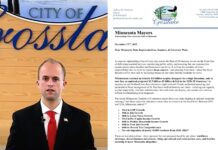
Officials with Minnesota Management and Budget announced Wednesday that the state’s projected budget surplus now sits at $2.4 billion. However, state officials warned that a “significant structural imbalance” is looming for Minnesota’s next two-year budget (FY 2026-27).
This $2.4 billion projection is an $808 million increase from the end-of-session estimate which was put together earlier this year. Still, the number is a sharp departure from Minnesota’s $17 billion surplus from December of last year.
According to Minnesota Management and Budget, “Higher estimates in health and human services and education” are causing a “negative structural balance” for the next budget cycle. As a result, state spending is projected to eventually exceed revenues.
Regarding this forecast, Senate Minority Leader Mark Johnson, R-East Grand Forks, said, “Today’s announcement of a short-term surplus with a $2.3 billion deficit is a direct result of Democrats’ out of control spending.”
Additionally, House Minority Leader Lisa Demuth, R-Cold Springs, said, “Democrats’ reckless spending has now set us on the path to have a budget deficit in the coming years. This could have been avoided if Democrats had even an ounce of fiscal responsibility.”
One year ago, Minnesota had a budget surplus of over $17 billion. However, much of that disappeared after Democrats in control of the Minnesota House and Senate passed a record $72 billion two-year budget during the 2023 legislative session. That budget, which funds all state operations through June of 2025, was the largest in state history.
Gov. Tim Walz, a Democrat, signed that budget into law in May of 2023 and dubbed it his “One Minnesota Budget.”
For context, the first biennial budget that Gov. Walz ever signed into law was roughly $48 billion; the governor approved that budget in May of 2019. Given the current $72 billion state budget, Gov. Walz has authorized a 50% increase in state spending over the last four years.
From 2020 to 2022, Minnesota’s population increased from 5.71 million people to 5.8 million people, a roughly 1.67% increase.










